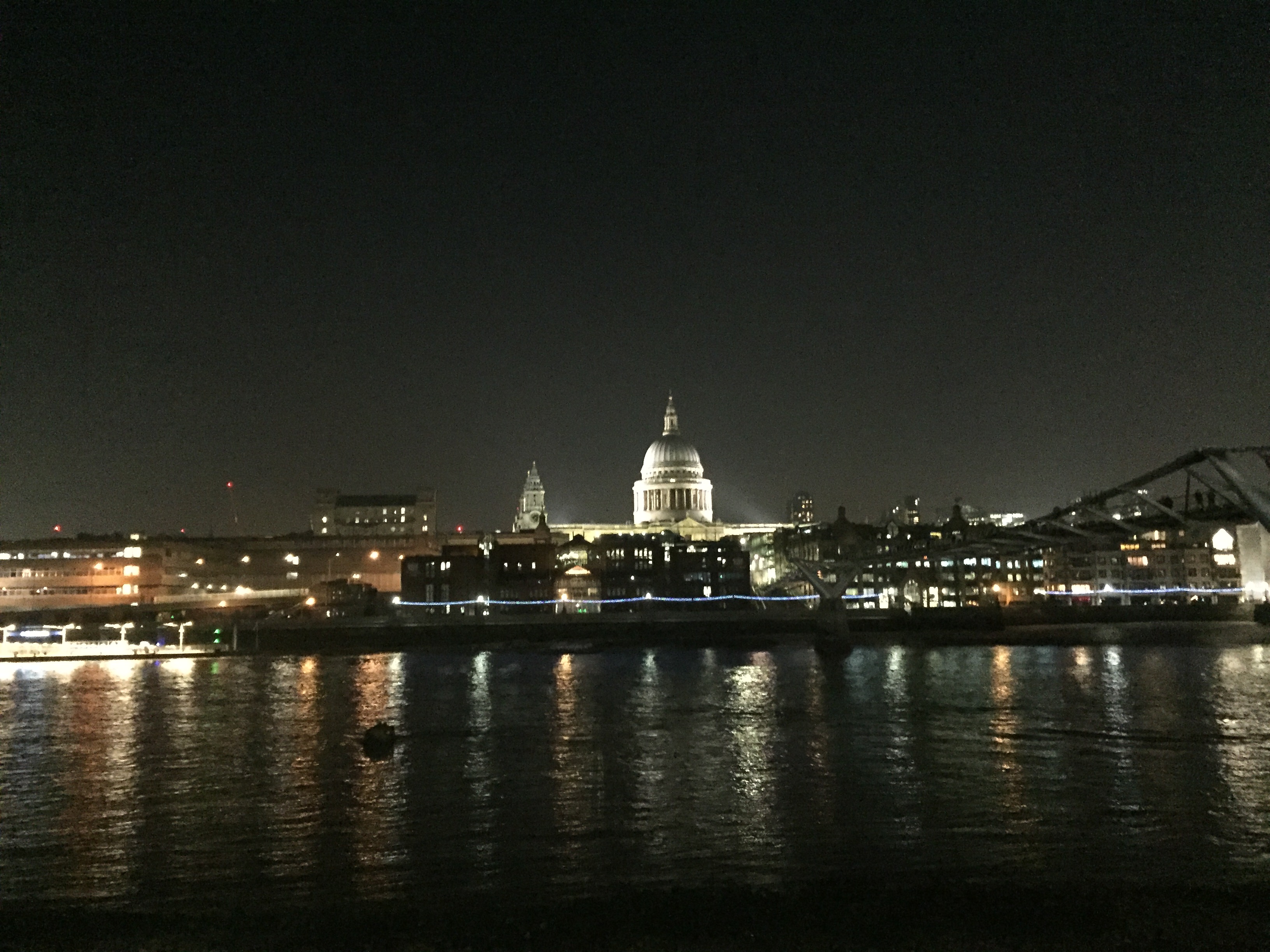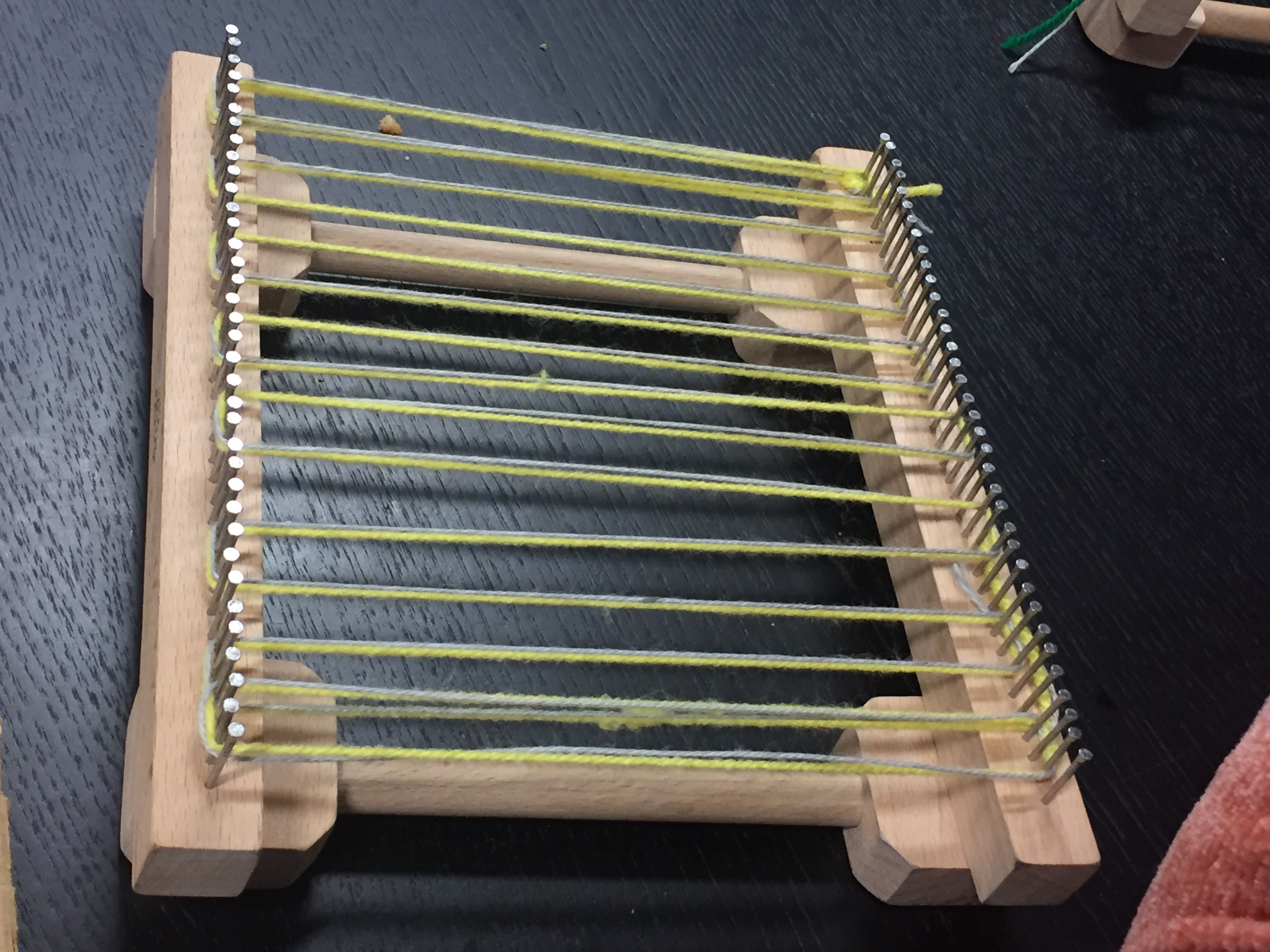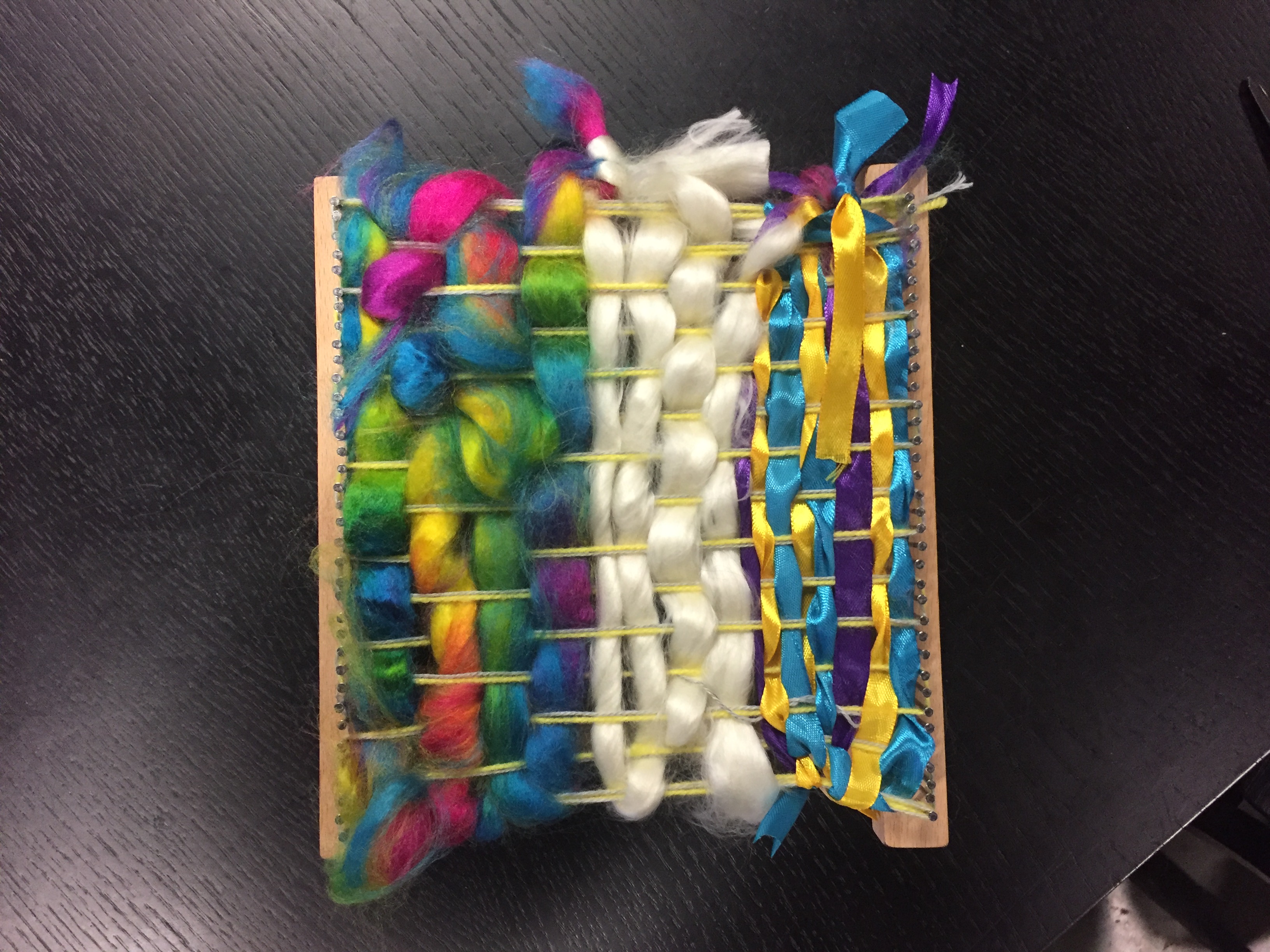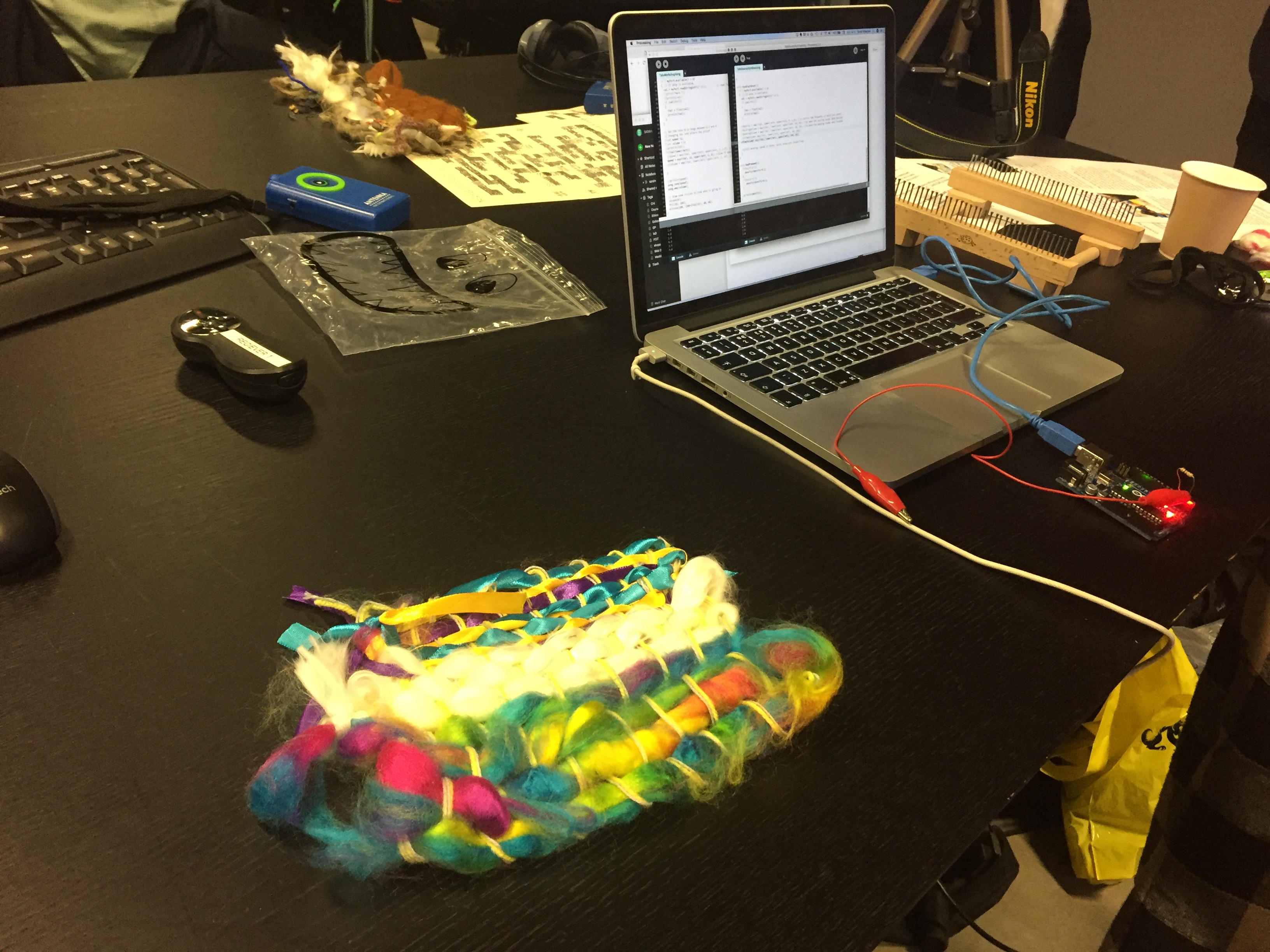During January I visited a few museums, which is always a good option when it’s cold and wet outside. And the most interesting event took place at the Tate Modern, involving a mixture of hand weaving and modern technology. It was an event run specifically for the visually impaired, including an audio described tour and a workshop, and it was a lovely day. So I wanted to tell you a bit about it.
The day started with an audio described highlights tour of the Anni Albers Exhibition, led by Dick Thomas. I’d never heard of Anni Albers before, but she was a highly skilled weaver and artist, and her works are very interesting to look at. It was great to hear the context behind the exhibits we were shown, and a bit about the lady herself, as well as getting descriptions of the artworks. That all made the tour very engaging. Even though I could see the exhibits fairly well, aided by my monocular, having them described helped me to interpret and appreciate them much better, filling in the gaps in my vision and understanding. That’s what I love about tours like that, they give me the complete picture.
That was followed by the main part of the day, a Conductive Coding Workshop. I’ll explain its purpose in a moment, but to begin with we were each given small wooden looms, on which was woven some electro-conductive thread going across. We were then able to use use any materials we wanted, from a wide variety on offer, to weave our way up and down though that thread, to create our own textile pieces. The correct terminology for the threading is warp and weft for those in the know about these things – which I’m not, so that was one of many new things I learned that day (another being that Saint Lucia is the patron saint of the blind).
I’ve never regarded myself as being very artistic or crafty, and I’ve never done weaving before. So I was taking a bit of a gamble in trying this out, and thought I probably wouldn’t be very good. It was the technology side of things that had particularly enticed me into going along,
But thankfully we weren’t expected to work on our own. And I was there with my friend Claire, so we were able to team up and create something together. Most people were collaborating in pairs I think, but one or two were happy working on their own.
And I enjoyed it, more than I expected. It’s not something I’d take up as a hobby, but once we were shown the basic weaving technique, I gradually got the hang of it, and found the experience very interesting. Getting an insight into the weaving process also helped me to appreciate the skill behind the artworks we’d seen earlier all the more. We all got plenty of assistance from the people leading the workshop too, the staff were lovely and helpful all day.
So by weaving blue and yellow ribbons down one side, rainbow coloured wool along the other, and some white wool down the centre, Claire and I came up with something that we were very happy with, and we got good feedback on it from others too.
Then came the particularly intriguing part, and the reason that we had conductive thread in our artworks.
The workshop was part of a research project, led by artist Emilie Giles from the Open University and Professor Sarah Wiseman of Goldsmiths University. They are investigating how people work with novel interfaces when interacting with technology – in this case e-textiles. To quote their information sheet, this term “describes any piece of fabric or clothing that has been enhanced, allowing it to communicate information to a computer, or have information communicated to it”.
So here they wanted to find out how we used our woven artworks to control sound, by observing how we touched, stroked and handled them. And to do this, they removed our work from the loom, and connected it to a laptop using an Arduino (a small electronic device a bit like a Raspberry Pi).
We first had to pat one hand up and down on our craftwork so the software could calibrate itself. Then we were able to touch and grasp it however we wanted, with musical chimes coming out of the computer as we did so.
The laptop’s responses depended on how hard or soft we interacted with the material. For instance, in one experiment it only played notes whenever it was touched – so the more pressure we applied, the more notes we heard. We couldn’t choose exactly what notes were played, as they were generated at random. But even so, the software was programmed to sound fairly musical, and it did sound quite nice.
Then in another experiment it played notes constantly, and the pressure we applied changed the volume. We tried that both ways, so in one case harder pressure reduced the volume, and in the other case it increased it.
It was very clever, and it was rather nice to have this colourful creation of ours making music. It made it feel very special to have it come alive like that, and it’s quite therapeutic really.
It will certainly be interesting to see how e-textiles develop in general as time goes on. I know it’s already out there in some items of clothing and other things, but it’s still a relatively new technology, so people are still experimenting and learning about it.
So it was a very unique and enjoyable experience all in all, I’m glad I gave it a go. Thank you to Emilie Giles, Sarah Wiseman, Dick Thomas and everyone at the Tate Modern for a lovely day. Credit also to the Tate Modern for their employment of people with disabilities, by the way, which came to light when I had a lovely chat with a visually impaired security guard, who’s worked there for many years. It’s great to hear that they’re being so inclusive.
And thank you for reading this post, I hope you found it interesting. You can find out more about the researcher and artist who ran the workshop at these links:
You can also see more pictures from the day on Emilie’s Instagram here, here and here. And I’ll leave you with a photo I took of St Paul’s Cathedral across the Thames from the museum, as it was dark by the time we left, and it looked beautiful all lit up.







One thought on “Conductive Coding At Tate Modern”